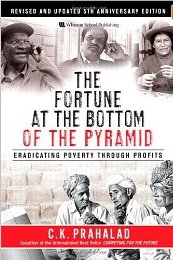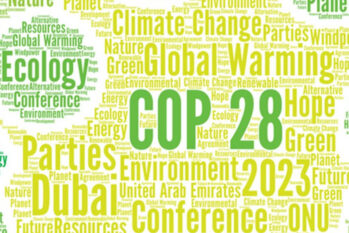PASS THE BATON is a new type of recycle shop with two locations, in the center of Tokyo. It cherishes the emotional bound that both, previous and new owner have with the item, fostered by a carefully curated setting.
2045: scenarios for the textile and fashion industry: How will the industry look like in 5, 10 and 30 years time? Scenarios offer research-based insights, and potentially can show how realistic a world is, that looks rather quite different from what we're used to. What if Asia become today's Europe? What if we did not buy to own? What if everyone was a maker?
If there is an area of fashion that is truly pushing the boundaries of what is technically and style-wise possible, then it is Haut Couture.
In January 2013 2 pieces among Iris van Harpenr’s 11-piece collection at Voltage show attracted the interested of fashionistas as much as product techies: The first ever wearable dresses created through a 3D printing process.
Sustainability for Fashion := "Creating desirable products guided by principles that consider sustainability as a core component of the process. [...]"
Sustainable fashion design := sourcing and production that do not pollute through the process of manufacture and do not deplete non-renewable resources.
Sustainability for Fashion := "Creating desirable products that evoke an emotional connection [...]"
5 years ago one Araisara's customers brought in a long Miyazome-dyed handkerchief. The designer fell in love with this beautiful dye technique. As soon as she could, she visited the Miyazome-dye atelier in Utsunomiya City in the northern Kanto region, some 2 hours from Tokyo on the Shinkanzen bullet train. The atelier was run by just one man, who was well into his 80s.
Circular economy is the antonym of linear economy. Linear economy has been the dominant industrial model in our history and postulates production is followed by consumption that then ends up with the disposal of used products. As opposed to this, circular economy seeks to rebuild capital, whether this is financial, manufactured, human, social or natural and sees products having a longer or a never-ending life that are either re-used as new inputs to create new products or shared and co-owned by different consumers.
Adidas was the first sportswear company to report on sustainability in 2000 following its first Standard of Engagement (SoE) in 1998. Allegations of sweatshops in their supply-chain preceded this move.
The latest 2012 report is now out - what is does it say?
C&A, part of the Cofra Holding that owns C&A Europe, Brazil, Mexico and China, has been a family business since 1841.
The company is quite conservative in communicating corporate responsibility achievements. Their style of communication appears to be more emotional than factual.
The company has been awarded the Textile Exchange Future Shaper award in 2012 recognising the company’s commitment to promoting the analysis and certification of organic cotton and textiles.
Resting the case for innovation.
“Globalization presumes sustained economic growth. Otherwise, the process loses its economic benefits and political support.” (P. Samuelson). There is an evident illogic, impossibility, of the traditional 'economic growth' lemma.
North Italian fabric manufacturer Bonotto is returning to their roots and at the same time giving luxury fashion fabrics a new lease of authenticity and craftsmanship.
For their ‘Fabbrica Lenta‘ (the slow factory) range, they have unearthed the looms as well as dye techniques their district made its name with in the early 20th century.
The book explains key factors in doing successful business with the poor, profitably as well as with a positive social impact. Numerous case studies show the how-to.
Natural Dyes in large scale industrial processes sounds like a complete 'No Go'. Tintoreria Clerici - one of the oldest and biggest in the business - is going back to their roots, and proving us all wrong.
The term ‘circular economy’ has recently been – again – converted into a buzz word. To some extent there are a couple of good reasons for that as both common sense as well as the Ellen McArthur foundation's most recent report prove.
It is quite astonishing: all the different contexts that the term ‘circularity’ or ‘circular economy’ is being used. They key point mostly is of course the waste reduction promises inherent in the term, and the subsequent lower dependency on finite resources.
But, in addition to reducing waste, carbon – or rather carbon footprint – is a key factor.
Unfortunately, the reality is sobering: taking fashion as example, at best between 3% and 6% of the industry's carbon footprint could be remedied that way.
And even worse: in order to realise the potential, three fundamental hurdles must be addressed. Some efforts are underway, of course, but a steep hill remains to climb.
Connecting the present and the past, learning and drawing conclusions from either, is and will remain key to creating a more sustainable fashion industry. So far, learning from the past in particular - in the good and in the bad - has been chiefly neglected. A series of thoughts.
Knowledge and data are two interesting entities: essential for decisions at any one time. And yet evolving with time. And with that, decisions taken some time ago, possibly decades earlier, may prove flawed – in hindsight.
But what if years down the road these insights are resurfaced and either proven to be partially or fully inaccurate? What if the nuggets are suddenly being used in a context that has shifted significantly since? What if our best intended and best-possible informed statements of the past are called out years, decades later?
A few thoughts on this dilemma.
COP28 yielded mixed results, featuring some historic 'firsts' such as a fossil fuel phase-out commitment, a $700 million loss and damage fund, the recognition of nuclear energy, and (this is huge!) a pointed spotlight on food systems' role in adaption.
Most of the old challenges though remain: It's all carrots and no sticks. Which shows in the continued absence of enforcement of Climate Targets or their stringency, and the eye-level conversation with Global South nations.
Cradle to Cradle is a design methodology that puts a 'waste-less' world at its heart. What is the concept all about? What does it mean for the apparel industry? And who practises it among designers and companies?






